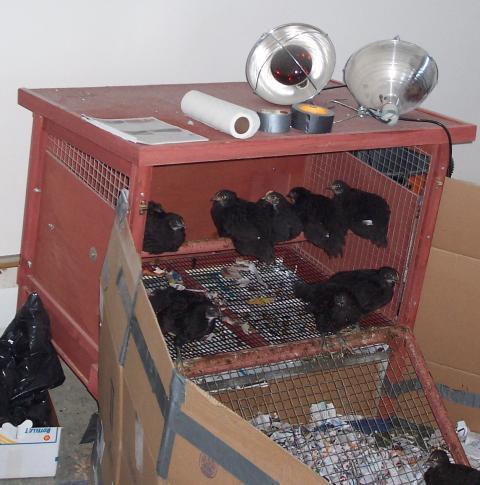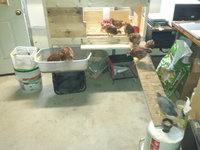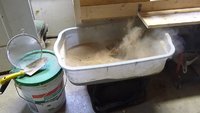junebuggena
Crowing
My brooder, in the garage. The concrete floor keeps it at about 50 degrees, year round. 50* is the average night time temp in the summer and the average daytime temp in the winter. Which makes the garage the perfect temp for acclimating chicks, no matter the season. The reason I stopped brooding indoors and with heat lamps is because the chicks were constantly overheating. I was adjusting the heat level almost constantly. Out in the garage, with the heating pad, it's much easier to manage their comfort level.

Newly hatched chicks snuggling under their surrogate mom, the heating pad.

3.5 week old chicks, completely off heat and ready to move outside.

Newly hatched chicks snuggling under their surrogate mom, the heating pad.
3.5 week old chicks, completely off heat and ready to move outside.








